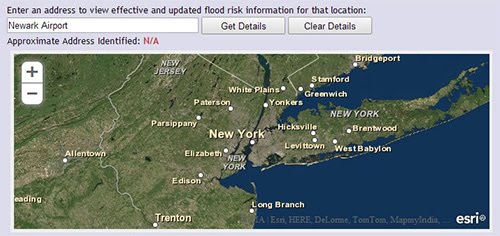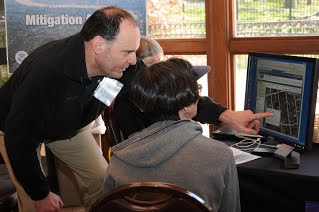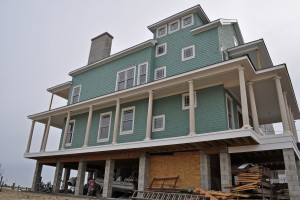Homeowners and Renters – Know Your Risk, Know Your Role, Take Action!
The New Jersey/New York coastal flood study will result in updated Flood Insurance Rate Maps (FIRMs) that provide a more accurate picture of flood risk in the region. You, as a homeowner or renter, play an important role in the map update process and in reducing flood risk in your community.
Know Your Risk

Before you can take the right steps to reduce the risk from flooding, you need to know what the risk to your property is. Are you in a high risk flood zone? Is your flood zone and/or Base Flood Elevation (BFE) changing on the preliminary FIRMs?
The easiest way to answer these questions is to use the “What Is My BFE?” address lookup tool. Just enter your address and get the flood zone and (if applicable) the BFE from both the preliminary and effective FIRMs for your property.
Know Your Role
The preliminary FIRMs may show changes to your flood risk, which could affect building requirements for your property now, and flood insurance rates and purchase requirements when the maps become effective. Be involved in the mapping process so that you understand the changes and how you will be impacted.
Take Action!

Here’s what you can do to keep informed about the map update and to reduce your risk from flooding:
- Protect yourself with flood insurance. If your flood risk has changed on the preliminary FIRMs, contact your insurance agent to understand how these proposed changes may affect your flood insurance policy in the future.
- Recent legislation has changed certain aspects of the National Flood Insurance Program (NFIP). Learn about flood insurance reform and how it affects policy holders.
- Rebuilding due to Sandy? Find the resources you need to rebuild safer and stronger and contact your local officials to make sure you understand the building requirements in your community.
- Get more information about how you can protect your home and family from future floods.
Resources
New York Resources

- FloodHelpNY – Information to help New York City residents understand what the changes to the FIRMs and recent Federal legislation will mean for their homes and families.
- New York City FEMA Flood Map Update page – The New York City Special Initiative for Rebuilding and Resiliency’s webpage about the current FIRM update.
- Ready New York: Reduce Your Risk guide – The New York City Office of Emergency Management’s guide for city residents about how they can reduce their risk from flooding and other disasters.
- NYC Planning Department Retrofitting Buildings for Flood Risk report – This report provides the results of an analysis of retrofit options available for buildings in the New York City floodplain.
New Jersey Resources

- Prepare, then Share – Residents can share personal stories and images of coastal flooding and read the stories of neighbors and their experiences.
- Jacques Cousteau National Estuarine Research Reserve – The Jacques Cousteau National Estuarine Research Reserve, administered through Rutgers University, is one of 28 national estuarine reserves created to promote the responsible use and management of the nation’s estuaries through a program combining scientific research, education, and stewardship.
- NJADAPT.org – This site includes online tools that can be used by the general public, local officials, and others to understand how a changing climate is affecting populations and communities in New Jersey.
Check with your local officials for other resources that apply for your community
FEMA Resources
- Frequently Asked Questions – Answers to frequently asked questions related to the coastal flood study, preliminary FIRMs, vertical datums, and more.
- Events Calendar for Homeowners and Renters – Information on public open houses to review the preliminary FIRMs and other public events will be added as it becomes available.
- Document Library – List of materials featured on the Region II Coastal website, organized by topic.
- FloodSmart.gov – Learn about flood risk and flood insurance through the official website of the NFIP.
- Ready.gov – FEMA’s preparedness website provides information on what you should do before, during, and after floods and other disasters to keep safe from harm.
See the Resources for Homeowners & Renters page for a complete list of resources.
Questions?
Contact us to find a subject matter expert who can assist you.
